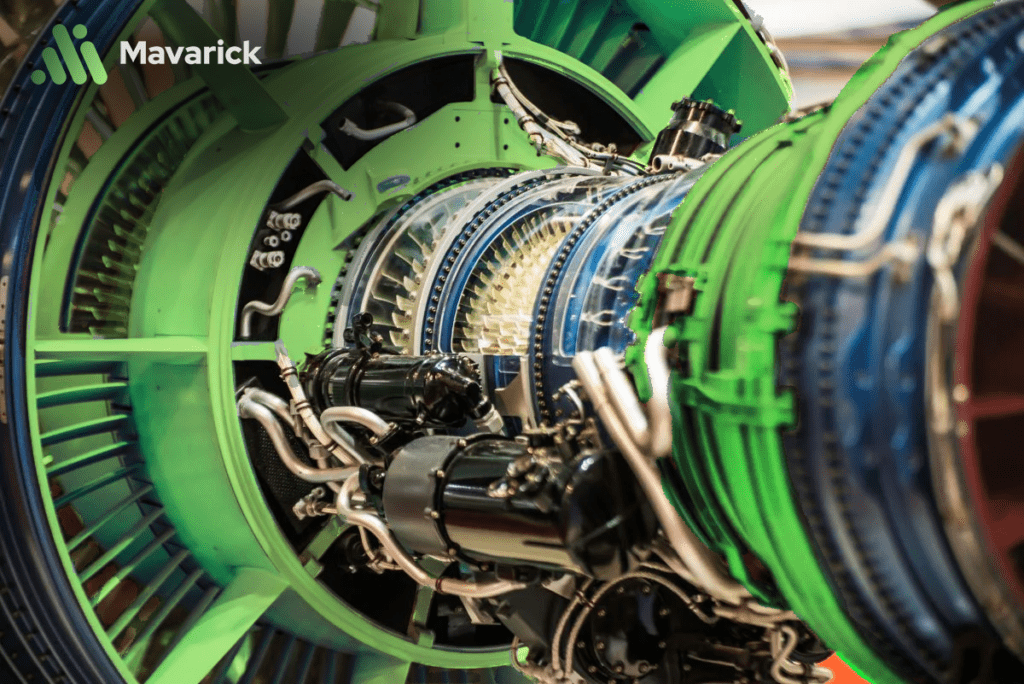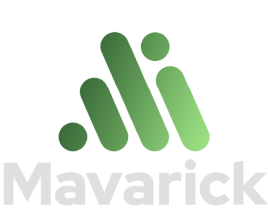The Role of Carbon Accounting Software in CSRD Compliance

Table of Contents
- What is Carbon Accounting Software?
- What is CSRD?
- CSRD Double Materiality
- How CSRD Will Change Manufacturing?
- Why Carbon Accounting Software is Crucial for CSRD Compliance?
- Automating Data Collection:
- Ensuring Data Accuracy:
- Supporting Double Materiality:
- CSRD Reporting Platforms:
- Key Features of Carbon Reporting Software
- Emissions Tracking Across Scopes 1, 2, and 3
- Real-Time Monitoring
- Data Integration and Consolidation
- Automated CSRD Reporting
- Benchmarking and Performance Analytics
- How CSRD Software Enhances ESG Reporting?
- Streamlined Reporting Processes
- Transparency and Accountability
- Contribution to Net-Zero Goals
- Benefits of Using a CSRD Reporting Platform
- Risk Mitigation
- Streamlined Workflows
- Enhanced Stakeholder Engagement
- The Role of CSRD Software in Driving Corporate Sustainability
- Case Studies Carbon Accounting Software Solutions
- 1. Mavarick Carbon Reporting Software:
- 2. SAP Sustainability Control Tower:
- Takeaways
- Frequently Asked Questions
- 1. What is carbon accounting software?
- 2. How does carbon accounting software help with CSRD compliance?
- 3. What industries benefit most from carbon accounting software?
- 4. What is CSRD double materiality?
- 5. Can carbon accounting software integrate with other business systems?
- 6. What is the penalty for non-compliance with CSRD?
As global attention on climate change intensifies, companies face increasing pressure to accurately report and reduce their carbon emissions. One of the most critical tools in this process is carbon accounting software, which aids organisations in monitoring, managing, and reporting their emissions.
In the context of the Corporate Sustainability Reporting Directive (CSRD), which mandates standardised reporting on environmental, social, and governance (ESG) metrics, such software platforms are essential.
This blog explores how the rise of sustainability reporting has driven the evolution of carbon accounting software, equipping businesses with the ability to meet growing regulatory demands such as those posed by the Corporate Sustainability Reporting Directive (CSRD).
Let’s dive in!
What is Carbon Accounting Software?
Carbon accounting software is a digital tool that helps companies track, manage, and report their carbon emissions. It typically collects data from various business operations, including energy use, transportation, and supply chains, and converts this data into measurable carbon footprints.
These tools are particularly effective in handling the three types of carbon emissions defined under the Greenhouse Gas Protocol:
- Scope 1: Direct emissions from company-owned operations.
- Scope 2: Indirect emissions from purchased energy.
- Scope 3: Emissions from the company’s value chain, including suppliers and product use.
Given the growing importance of sustainability reporting, carbon accounting software has advanced significantly, offering businesses the tools they need to stay compliant with various global regulations like the Corporate Sustainability Reporting Directive (CSRD).
These platforms are designed to track carbon footprints, assess risks, and optimise operations to align with long-term climate goals. Particularly for industries like manufacturing, where carbon emissions are typically higher, carbon accounting software is crucial for managing Environmental, Social, and Governance (ESG) metrics and reducing operational carbon footprints.
Get Started with Carbon Reporting
What is CSRD?
The Corporate Sustainability Reporting Directive (CSRD) is a regulatory framework introduced by the European Union to enhance transparency in sustainability reporting. It replaces the Non-Financial Reporting Directive (NFRD) and expands the number of companies required to report on sustainability metrics, including carbon emissions.
Under the CSRD, companies must provide detailed disclosures on ESG factors, such as climate-related risks, carbon emissions, and human rights policies. This aligns corporate responsibility with the European Green Deal, the EU’s plan to achieve climate neutrality by 2050.
CSRD Double Materiality
A key aspect of CSRD is double materiality—an idea that companies must report both the factor given below;
- Financial Materiality: How sustainability issues affect their financial performance.
- Environmental and Social Materiality: How the company’s operations impact the environment and society.
This concept ensures that businesses are transparent about their carbon footprint and the broader environmental consequences of their operations.
How CSRD Will Change Manufacturing?
Manufacturers have always faced the need to track finances, production, and supply lines. Now manufacturers will face the added regulatory burden of tracking carbon emissions.
Publicly owned businesses have always had to track & report on their finances. These companies will find tracking and reporting on carbon emissions familiar. Privately owned enterprises may face growing pains as they embark on public reporting of carbon emissions.
But manufacturers can also find novel opportunities within the new world of sustainability reporting.
Manufacturers that are nimble enough to adapt quickly to reporting standards may find their services in higher demand.
Especially if they can find ways to reduce their carbon emissions.
Beyond immediate opportunities for new business, early adopters may also find a more agreeable environment for raising capital. As investors face increasing regulatory pressures to hold sustainable investments in their portfolios, there will be more cash looking for responsible manufacturers.
For a full view of carbon reporting in manufacturing, see this Guide to Sustainability and Carbon Reporting in Manufacturing.
Why Carbon Accounting Software is Crucial for CSRD Compliance?
Complying with CSRD reporting can be challenging, especially for large corporations with complex supply chains.
This is where carbon accounting software and CSRD reporting software become invaluable. They streamline the process by:
Automating Data Collection:
Carbon accounting software integrates with business systems to collect emissions data automatically. It captures data across Scope 1, 2, and 3 emissions, enabling comprehensive reporting.
Ensuring Data Accuracy:
These tools reduce human error by standardised data collection and ensuring consistency in how emissions are measured and reported. This is critical for meeting CSRD requirements.
Supporting Double Materiality:
Carbon accounting platforms often include features that help companies assess and report on both financial and environmental materiality. This ensures compliance with the CSRD double materiality principle.
CSRD Reporting Platforms:
Dedicated CSRD reporting platforms come equipped with templates and frameworks that align with the directive’s specific reporting standards, ensuring that companies submit accurate, compliant reports.
Key Features of Carbon Reporting Software
To meet the demands of CSRD and ESG reporting, carbon accounting software typically includes several key features:
Emissions Tracking Across Scopes 1, 2, and 3
Carbon reporting software tracks Scope 1 emissions (direct), Scope 2 (energy-related), and Scope 3 (value chain) emissions in a unified platform. This comprehensive tracking is vital for companies looking to measure their full carbon impact.
Real-Time Monitoring
Advanced CSRD software platforms allow real-time monitoring of emissions, enabling companies to respond to changes quickly. This is particularly useful for companies looking to make immediate adjustments to stay on track with carbon reduction goals.
Data Integration and Consolidation
Carbon accounting tools often integrate with existing business software (e.g., ERP systems) to gather data from various departments seamlessly. This ensures a consolidated view of a company’s carbon footprint, which is crucial for generating accurate CSRD reports.
Automated CSRD Reporting
Many CSRD reporting software solutions offer automated report generation, ensuring that reports align with EU sustainability guidelines. They provide templates and formats that are compliant with CSRD’s specific reporting requirements, saving companies time and effort.
Benchmarking and Performance Analytics
With carbon reporting software, companies can compare their performance against industry standards or regulatory benchmarks. This helps identify areas for improvement and tracks progress toward sustainability goals.
How CSRD Software Enhances ESG Reporting?
Streamlined Reporting Processes
CSRD software simplifies the process of compiling ESG data, offering a centralised platform where companies can manage everything from carbon accounting to social and governance metrics. The software automatically consolidates emissions data, aligns it with CSRD standards, and generates comprehensive reports.
Transparency and Accountability
By using carbon reporting software, businesses can enhance transparency in their sustainability efforts. This improves stakeholder trust and demonstrates a company’s commitment to minimising its environmental impact. Such transparency is increasingly valuable as investors prioritise ESG factors in their decision-making.
Contribution to Net-Zero Goals
With CSRD ESG reporting requirements, companies must demonstrate how they are contributing to the broader goal of reducing global emissions. Carbon accounting software helps track a company's progress toward net-zero emissions, ensuring that sustainability goals are measurable and achievable.
Benefits of Using a CSRD Reporting Platform
Risk Mitigation
Compliance with the CSRD is not just about meeting legal requirements—it’s about managing risks related to sustainability. Non-compliance could lead to penalties, reputational damage, and lost investor confidence. A CSRD reporting platform mitigates these risks by ensuring that companies meet all necessary regulations.
Streamlined Workflows
These platforms integrate ESG data collection with reporting, creating an efficient process for managing sustainability metrics. They also reduce the administrative burden of manual data entry and report generation, freeing up internal resources for more strategic initiatives.
Enhanced Stakeholder Engagement
Stakeholders, from investors to consumers, are increasingly demanding transparency in corporate sustainability. By using CSRD software, companies can provide detailed and accessible ESG reports that align with their values, creating stronger relationships with stakeholders.
The Role of CSRD Software in Driving Corporate Sustainability
CSRD reporting software plays a pivotal role in helping companies transition to more sustainable business models. By offering tools to track, report, and manage carbon emissions, these platforms ensure that businesses not only comply with regulatory requirements but also contribute meaningfully to global sustainability efforts.
Through the automation and standardisation of data, carbon accounting software makes it easier for companies to meet their sustainability targets and align with international frameworks such as the Paris Agreement.
Case Studies Carbon Accounting Software Solutions
1. Mavarick Carbon Reporting Software:
Mavarick offers an intuitive platform designed to help companies automate data collection, track emissions, and ensure CSRD-compliant reporting. It integrates real-time monitoring features and provides recommendations for emissions reduction.
2. SAP Sustainability Control Tower:
SAP’s solution integrates carbon accounting with broader enterprise systems, allowing companies to manage sustainability alongside other operational metrics.
Takeaways
The growing emphasis on corporate sustainability means that businesses can no longer afford to overlook the importance of accurate carbon accounting. With the introduction of the Corporate Sustainability Reporting Directive (CSRD), companies are now required to take a more transparent and standardised approach to ESG reporting.
Using carbon accounting software and CSRD reporting platforms, companies can streamline data collection, ensure compliance, and contribute to a more sustainable future. Not only does this enhance corporate responsibility, but it also strengthens relationships with stakeholders, improves investor confidence, and supports global efforts to combat climate change.
As sustainability continues to be a top priority, the integration of CSRD software into business operations will be key to driving lasting environmental impact and achieving carbon reduction goals.
Frequently Asked Questions
1. What is carbon accounting software?
Carbon accounting software helps businesses measure, track, and report their greenhouse gas emissions across Scope 1, 2, and 3. It provides accurate insights for sustainability reporting and compliance with regulations like CSRD.
2. How does carbon accounting software help with CSRD compliance?
It automates the collection of emissions data, ensuring compliance with the detailed reporting requirements of CSRD, including Scope 1, 2, and 3 emissions and double materiality.
3. What industries benefit most from carbon accounting software?
High-emission industries like manufacturing, energy, and transportation greatly benefit, as these tools streamline the tracking and reporting of emissions, which are essential for ESG reporting.
4. What is CSRD double materiality?
Double materiality in CSRD means companies must report on how sustainability issues impact their financial performance (financial materiality) and how their activities affect the environment and society (environmental/social materiality).
5. Can carbon accounting software integrate with other business systems?
Yes, many platforms integrate with ERP systems and other business software to automatically pull data, streamline workflows, and ensure comprehensive reporting across all areas of operations.
6. What is the penalty for non-compliance with CSRD?
Companies that fail to comply with CSRD face financial penalties, and reputational damage, and may lose investor confidence. The exact penalties vary by country.
Contact Mavarick today to see how simple and powerful it is to integrate carbon reporting software within your operation so you can get ready for CSRD.
Carbon Accounting System
Carbon Emissions Reporting for the Supply Chain
- Visible Supply Chain
- Quality Data You can Trust
- Auditable Reports



